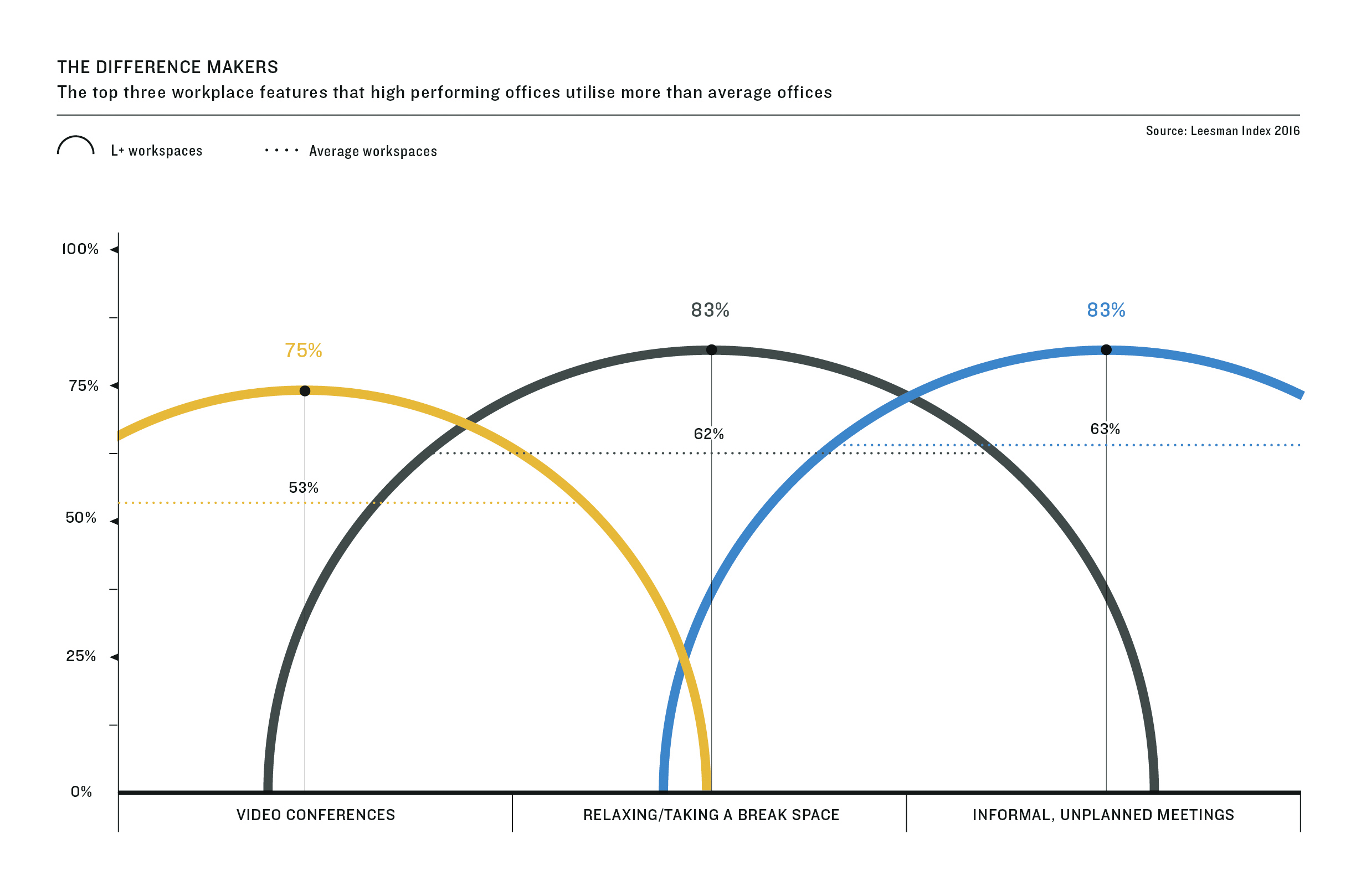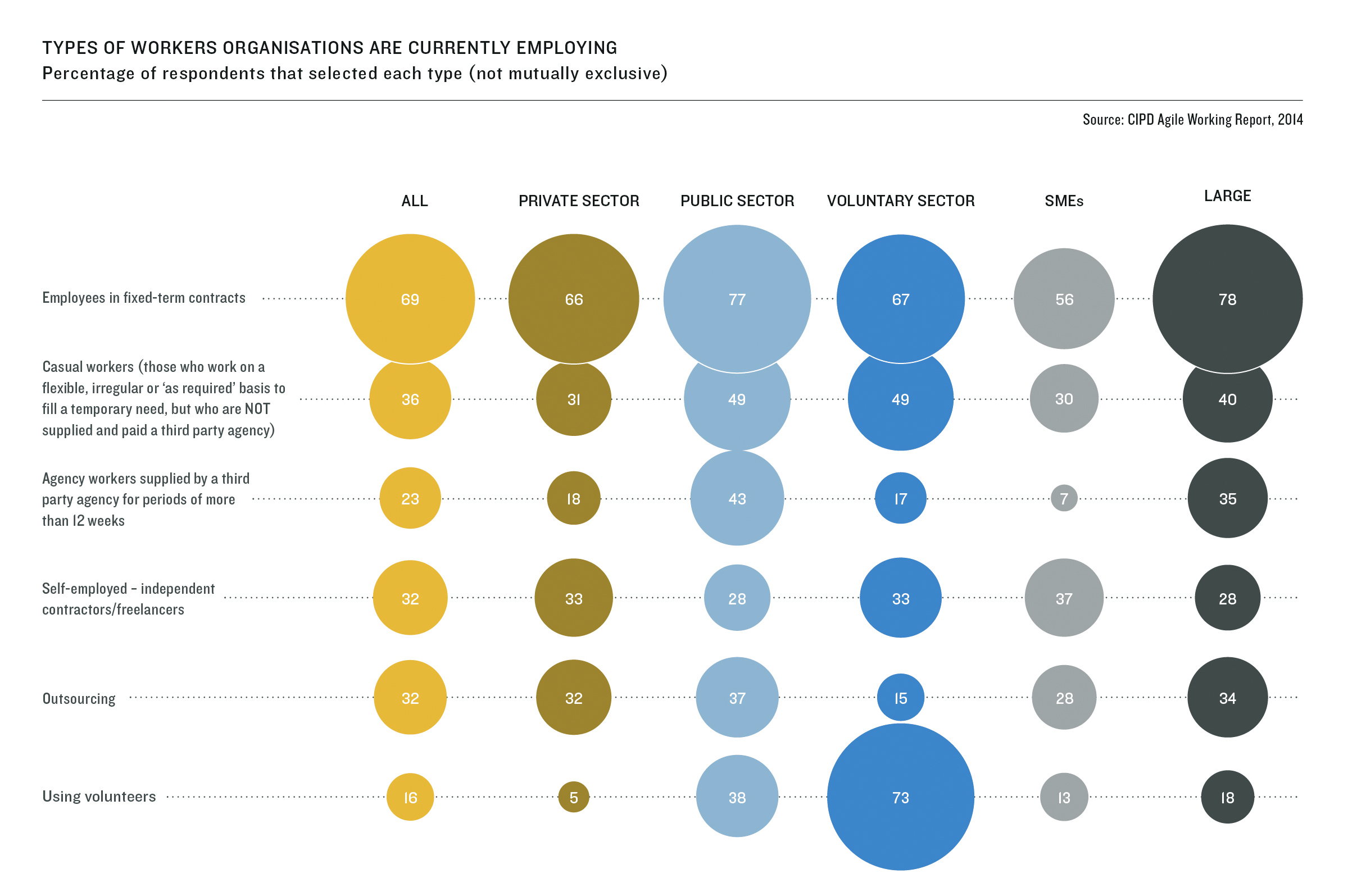-
Mobile working is not the norm - 91% of UK employees still work solely from the office
-
The workplace has become a major differentiator in the attraction, development and retention of talent
-
The social value of workplace has profoundly changed to being a catalyst for community and cohesion
The role and impact of technology has changed the options of how and where people work, whether that is the office, home, coffee shop or all the spaces in between. Much has been written on this topic and much has been mooted around the idea of an increasingly mobile workforce and the impacts of the gig economy . Some organisations are starting to create ‘alternative workplace’ programmes that accommodate non-traditional work practices, settings and locations. More work is being done outside office hours too and the lines between work and non-work time are becoming increasingly blurred.
Faster and more accessible connectivity, big data and artificial intelligence are revolutionising the workforce and the spaces they inhabit. By 2030, 30% of corporate portfolios will comprise flexible space, including co-working, incubator and accelerator space, according to an article in JLL/Wired entitled ‘Workplace Reworked’. Based on our research for The Stoddart Review we suspect that this can be brought forward by 10 years.
And while the workplace is certainly changing, for now the data shows that for the vast majority of knowledge economy workers the office is still their primary place of work — 91% of employees are solely or predominantly based at a single location (the Leesman Index, 2015).
The idea of the nomadic worker is still far from the norm. While 15% of employees in the UK and Ireland are based at a non-allocated/flexible desk, 64% of UK and Ireland employees are based at ‘their own desk in an open plan area’, exploding the myth that no one has a desk any more. Moreover, for those companies who do offer remote and home-working the office still (and, in fact, possibly even increasingly) serves as the most effective enabler of people interaction. According to the Chartered Institute of Personnel and Development (CIPD), only 7% of employees primarily work from home and at co-working sites.

Changing the workplace status
There is a growing number of progressive employers that are prioritising need over status when making workplace choices. These companies understand that there has been an enormous change in the social value of workplace. Where their workplaces used to be the manifestation of power and hierarchy, now they affirm collaborative culture and a sense of community. Here, the workplace has become the source of coactive power (the opposite of coercive power) and as one of the Review contributors suggested, now needs to offer ‘exponential humanity to counterbalance exponential tech’.
These firms are focused on increasing the quantity and quality of interaction within a workplace, as evidenced by the popularity of collaboration and ‘collision’ spaces. This raises the issue of the relationship of that space to productivity.
Interviews with some of these forward-thinking companies show that progressive workplaces prioritise brand and manifestation of culture. For example, Skanska’s values include caring for the environment, supporting health and wellbeing and promoting green solutions – and its workplace strategy backs this up. As a result, Skanska’s employees report feeling proud to work in their building and they have created a high performance workplace.
The data goes against the idea that it is only millennials who want an office that works well and enables them; all employees want this, regardless of age
It is also clear from The Stoddart Review’s data that high-quality social infrastructure is a feature of high-performance collaborative teams, with the highest ‘sense of community’ satisfaction scores correlating to satisfaction with collaborative and collective activities. This social cohesion consistently returns the highest employee agreement that ‘the design my workplace enables me to work productively’.

Unlocking human potential
In a hyper-competitive world, the workplace has become a differentiator in the attraction, development and retention of talent. According to a 2015 resources and talent planning survey by CIPD, job candidates consider physical workplace a more important factor than leadership, CSR, technology and the diversity and inclusion agenda.
In addition, satisfaction with ‘a variety of different types of workspaces’ is the highest probability indicator that an employee will agree that ‘the design of their workplace enables them to work productively’, according to Leesman. It is clear this is the single biggest workplace lever for direct return on investment in human capital. Yet just 50% of Leesman’s UK & Ireland respondents agree that their workplace is a place they would be proud to bring visitors to (compared with 82% in Leesman’s category of high performance workplaces).
All of the data indicates a shifting psychological contract and goes against the idea that it is only millennials who want an office that works well and enables them. In fact, the clear message from the research for The Stoddart Review is that all employees want this, regardless of age.
This means it is critical to ensure that the workplace is performing to the best of its capabilities in order for businesses to stay agile, fast-moving and competitive. The devastating finding from the Leesman Index that only one in two office workers say they can work productively highlights the vital importance of ensuring that employers equip them to do the best they can and give them a reason to come into work.
Mobile working is not the norm - 91% of UK employees still work solely from the office
The workplace has become a major differentiator in the attraction, development and retention of talent
The social value of workplace has profoundly changed to being a catalyst for community and cohesion

